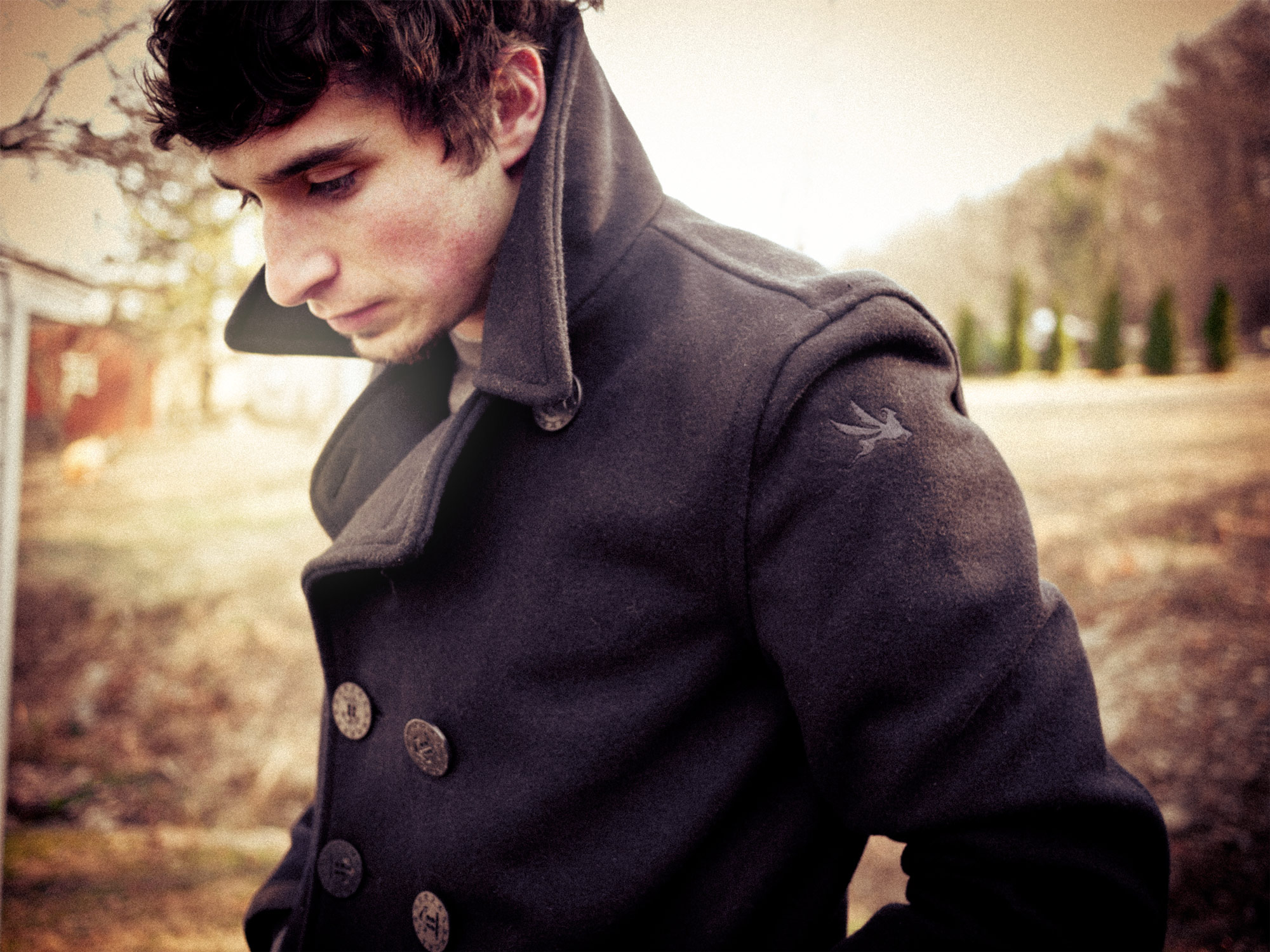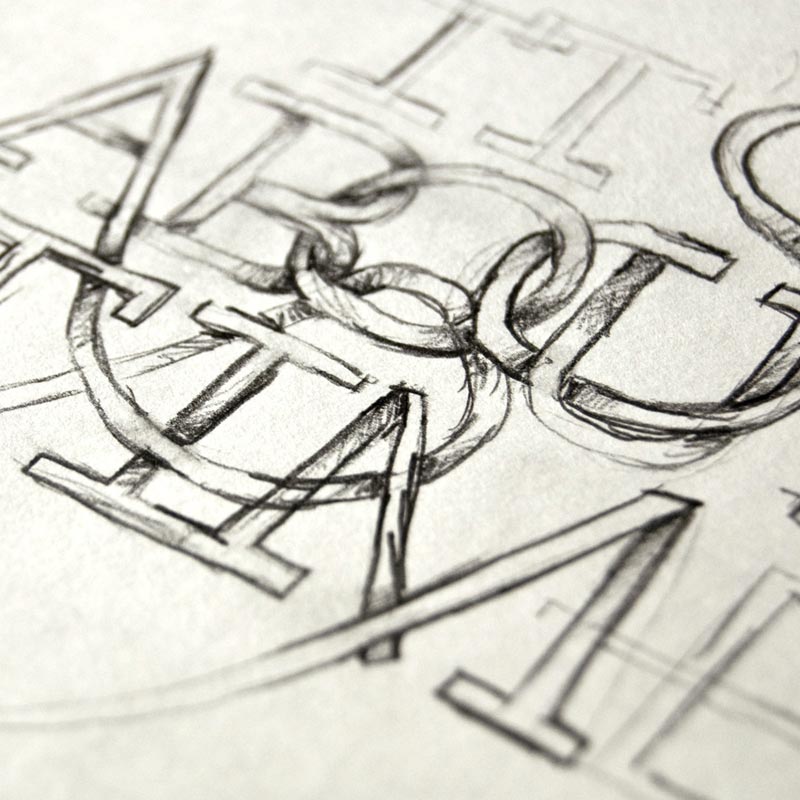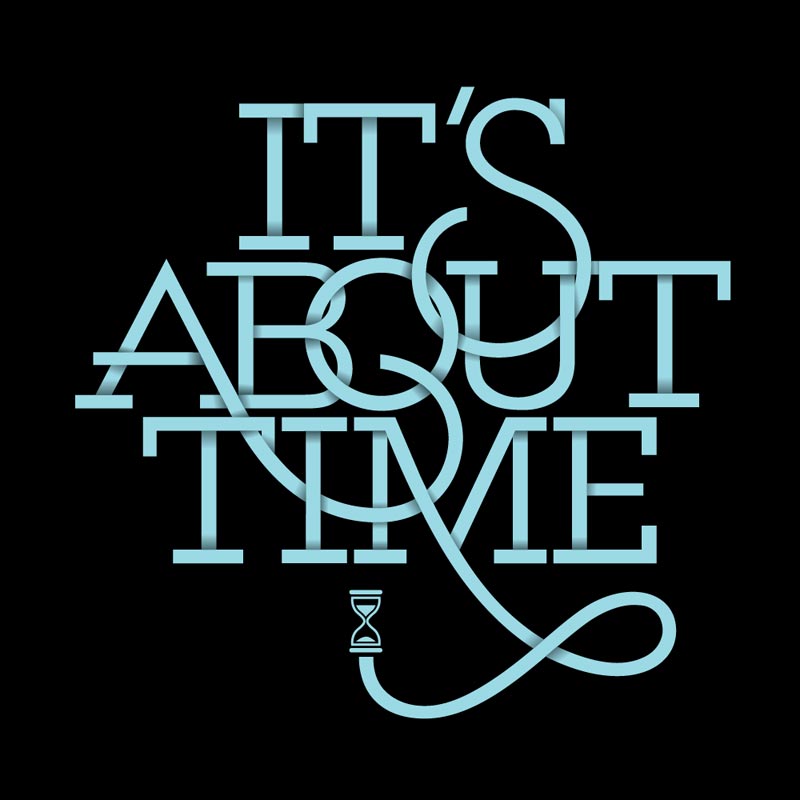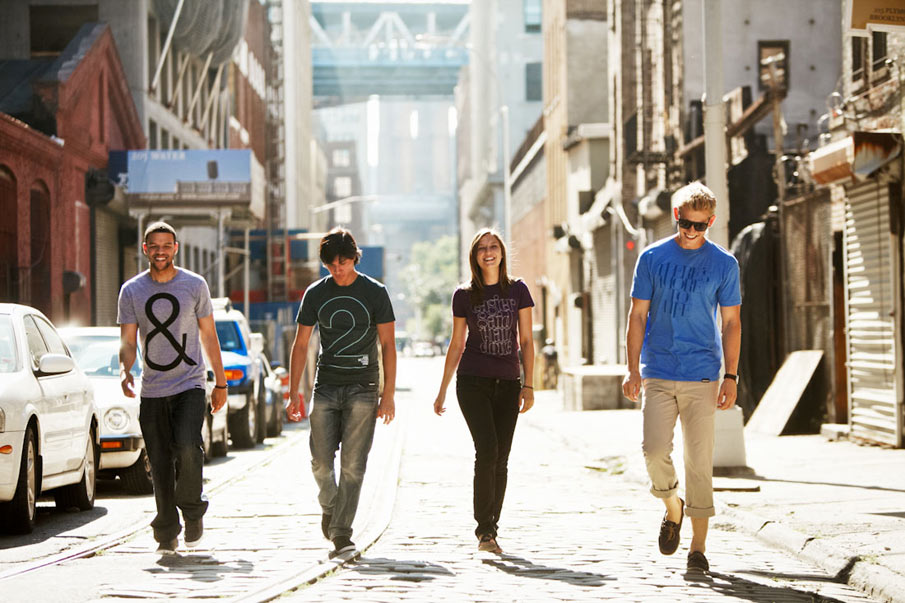
- Interview by Ryan & Tina Essmaker March 13, 2012
- Photo by Jeff Sheldon
Jeff Sheldon
- entrepreneur
- designer
Jeff Sheldon makes his home in Downingtown, Pennsylvania, with his wife and their Boston Terrier, Pixel. Jeff graduated with a B.S. in graphic design in 2008 and has a passion for all things design. When he’s not designing or scheming up the next Ugmonk release, he’s probably raving about Chipotle, trying to dominate Settlers of Catan, planning his next snowboarding trip, or sleeping.
Interview
Describe your path to becoming a designer and entrepreneur.
I’ve been doing art since I was a kid—scribbling on every little piece of paper, doodling, and sketching. I was the kid that would take the coloring book and not only color precisely within the lines, but I would also try to meticulously reproduce the drawing including every small detail. I grew up doing more of the fine art side of things—sketching, painting, sculpting. I also liked sports and other things that kids do, but I always had this passion to create. I spent a lot of time building with Legos, Tinkertoys, and Lincoln Logs. That was the stuff I did; it was what I loved to do.
As I got further into the art side of things and learned how to refine and properly sketch, I pursued that through high school, but I wasn’t sure where to go from there. I knew I wasn’t going to be a fine artist because everyone told me I couldn’t make a living doing that. I started looking at college programs and thought maybe I could do 3-D animation. I explored it, but decided it wasn’t for me. Then someone suggested I look into graphic design. I didn’t really even know what it was. I knew of Photoshop, but hadn’t done much in the digital world at all. Once I got into college and started taking graphic design classes, I discovered this world of design that I didn’t know existed. I fell in love with it and I especially fell in love with typography. That passion continued through college.
I never thought of myself as an entrepreneur or business guy. It really just evolved from wanting to make things and then I realized, “Hey, I can sell this stuff.” The whole t-shirt thing got started because I was submitting art to sites like Threadless and Design by Humans. I won a contest on Design by Humans, got $500, and had my design printed and sold on shirts. That was pretty cool and I had fun doing it. I continued submitting work to contests to make some side money as a college student. I won a few more times, but the only problem was that they then owned my designs and I couldn’t do anything else with them. On a whim, I had the idea to sell my own stuff. I thought that if people were going to buy my designs, I might as well get the recurring revenue from it.
Fast forward to after college when my wife and I got married and moved to Vermont, where I took a job at an agency. A month after that, I decided to act on my idea of creating my own t-shirts on the side. That was literally the start of Ugmonk. I had no idea that it would turn into a full-time gig, but I’m glad I did it—it’s been the most fun and creatively satisfying thing I’ve done. That’s the story in a nutshell.
When you graduated college and took an agency job, did you enjoy doing it or did you think it was maybe something you didn’t want to be doing and that’s why you started selling t-shirts?
Kind of yes and no. I was at the agency for two years and it was a really good experience. I wouldn’t change that. We were doing action sports marketing and here I was as an entry level designer right out of college getting to work on these projects for big, well-known brands. It was what every designer dreams of, but that novelty soon wears off as you’re doing production work, editing photos, and building mechanicals all day. From a design standpoint, the experience taught me so much, but I’m not the type of person that can just go home and kick back and watch TV all night—I have to do something with my hands and keep them busy. I started Ugmonk as a creative outlet since I was mainly doing production work at my day job.
As far as being at an agency instead of jumping right into freelance, I think it was really good to go and put a few years in there.
Did you have an “aha” moment along the way when you thought that Ugmonk could be a full-time job? What caused you to take that leap?
A lot of people look at the success I have now and think it happened so fast, but if you look at anyone who’s successful, they had years where things were pretty small and slowly grew. The first thing I did was print four designs—50 of each design. I put the shirts on my site and reached out to bloggers and others online. A couple months later, a few designs were already selling out. I put all the money back into the business and bought 400 shirts and I continued that process until I built up my design inventory.
Early on, people would ask me if I was going to do this full-time and I always said, “No way. This is a side thing. I’d have to sell a lot of shirts to do this full-time.” For a while, I ignored the thought of doing this full-time, even though I thought it’d be awesome. I continued working at the agency and my wife was also working a full-time job, so I didn’t touch the money I made from the business for the first two years. I poured everything I earned back into the business and was able to expand products and continue building inventory.
About a year and a half into it, my wife and I started to have conversations about the possibility of me going freelance and splitting my time 50/50 between client work and the t-shirt business. The economy was rough and we thought it would be crazy for me to give up my job and benefits because everyone was holding on to their jobs.
My wife encouraged me to figure out what we would need to do financially to make the jump. About four to six months went by and we’d go back and forth about it. We finally decided it was time to make the jump—we were young, we didn’t have kids, we didn’t have anything holding us back. Ugmonk had scaled to the point where I knew it could replace the salary I was making at my day job if I also did some freelance work on the side. Then I took the jump and never looked back—it was the best decision I’ve ever made.
Also, instead of doing 50% freelance, that became 0% freelance because I had zero time to do it. It had to be one or the other and I decided to pour 100% into Ugmonk and that really paid off. When I jumped into the business full-time, that’s when it really took off. It’s still not a huge business, but it’s a small world when you start seeing your shirts on TV shows. It’s pretty wild.
Would you say that the leap into doing Ugmonk full-time was the biggest risk you’ve taken?
Yeah, that was the biggest risk for me. From society’s standpoint, going out full-time on your own and doing your own business is elevated too high as a big risk. It is a risk, but it’s also a risk working for someone else; you don’t know if they’re going to fire you or if there’s going to be work, especially in this economy. In the end, it is a risk, but I knew I had the drive to do it. I knew that if I didn’t sell enough products, we weren’t eating. Most people are scared off by the risk factor, but they might not realize how many doors it can open. Now that I’ve been able to build the Ugmonk brand, if I ever wanted to go back out and work a 9 to 5 job, I think I would find a lot more agencies wanting to hire me.
“…many times there is a disconnect between the finished product and the person who actually made it. Creating an awareness of that connection is something I try to do with Ugmonk.”


You mentioned your wife encouraging you to take the leap to do Ugmonk full-time. Do you want to share about how she and others in your life have supported you?
Sure. My wife has always supported me from day one. She had no idea what she was getting into, which she tells me now, but she loves it and supports me 100%. She doesn’t consider herself creative, but she is great at organizing and helping with the details that I’m not so good at. A year after we started, our one bedroom condo had shirts piled high in every room, everywhere. It was chaos and a sight to see. It got to the point where she was de-tagging each shirt and getting them ready—I don’t know if you guys have done the fulfillment on your shirts yet, but it’s a lot bigger task and is not as glamorous as people think. My wife put up with all of that and has been by my side helping since we started.
I also had great professors in college that challenged me to do more than the bare minimum on projects.
Besides that, my parents have always encouraged me to do art. They sent me to private art lessons when I was growing up. They’ve always encouraged me to pursue that and I’m thankful that they did because it’s evolved from fine art to what I do now. They were always big supporters.
Also, Ugmonk has become quite a family business. My mom is officially on the payroll to do all the fulfillment and shipping of orders. I no longer have to do all of that, which allows me to focus more on designing and building the brand. The Ugmonk “warehouse” is my parent’s basement. There are thousands of shirts all piled high on the shelves. It’s pretty crazy. My brother is a business partner and my wife helps me with everything. My dad also helps with inventory. It’s cool to be a family business where everyone chips in and does their part. It’s been fun.
Have you had any mentors along the way who have had a big impact on your life?
Not formally. I’d say the internet as a whole has been my mentor. There are so many cool designers and entrepreneurs I’ve met through doing Ugmonk. I’ve been able to ask them questions and get advice on things like screen-printing, which is nice, but I don’t have a specific go-to person for everything.
I guess I would consider my brother a mentor because he’s a business partner with me and does all the development of the website and helps out with the business end of things. He’s a really smart guy in general, so I’m always bouncing ideas off of him. He’s not a designer, but he has some creative juice in his blood.
Ryan: That seems to be the norm nowadays—the creative community online is so generous and willing to give back. We’ve experienced that with TGD and it’s been amazing.
Yeah. I hate to use the phrase “social media”, but for lack of better words, I feel like it’s brought everyone down to the same, human level. For whatever reason, Twitter especially has a way of putting us all on the same plane, which is cool. I’ve met so many people. Sometimes I think, “I don’t know how I’m at dinner with this person I’ve looked up to.” I’ve been able to make great connections just through having conversations with people online.
Do you feel a responsibility to contribute to something bigger than yourself?
Now you’re pulling out the hard questions. (laughing) Yeah, I think that as a design brand, I want people to notice that there’s a lot more craft and detail involved in what goes into good design—not that I’m doing everything perfect—but I think that many times there is a disconnect between the finished product and the person who actually made it. Creating an awareness of that connection is something I try to do with Ugmonk.
We’ve also partnered up with some different charities that are involved with helping to feed orphans around the world, including Rice Bowls. From the get-go, it was important to us to be able to give back. Even if we only had a tiny bit of success and could only give a few dollars here and there, we hoped that eventually we could give more. It’s great to have enough money, but it’s great to give back and to let our customers have a part in that too. I try to be really transparent about where the money goes and not use giving as a hook. I want my brand to be successful and I want to be profitable, but in the end, giving back and helping others is important to me.
Are you satisfied creatively?
I would say I’m the most creatively satisfied that I have been. Being your own client and getting to handle everything from start to finish—designing the product, the customer experience, the website—is the ultimate. Sometimes client work doesn’t feel very creative or freeing, but what I’m doing feels very satisfying creatively and I love it—I hope that shows. Even so, I know there’s always room for improvement. I think any designer can look back and say, “I could’ve done that a little better.” As a designer, I’ll always have a long way to go, but being able to manage my own thing and be the decision-maker is really nice.
Do you see yourself doing more art related things down the road like you did when you were younger?
I would love that. I feel like it’s kind of come full circle because I’m back to sketching and getting my hands dirty. I’d like to do that more and even break out the oil paints and do more on the art side of things.
If you could give one piece of advice to another designer or entrepreneur starting out, what would you say?
I would probably tell them to find what they’re passionate about and really go all out with it. There’s no reason, just because something is your hobby, that you need to only do it on the weekends or after your 9 to 5 job. You gotta pay the bills, but I think too many people are afraid to really go after what they’re passionate about.
From a design perspective, if I were talking to a design student, I would tell them to go above and beyond what people are giving them as projects or assignments and to do self-initiated stuff. You’d be surprised what happens when you do good work and put it out there.
I started Ugmonk because I thought it would be fun to design t-shirts and not because I was trying to make a lot of money. If you can find what you really love, that passion will really come through in what you do and in the end, it will be worth it. That’s my mantra: Do what you love and love what you do.
If you could go back and do one thing differently what would it be? Or would you?
I guess it would have helped to have some business background. I was technically a business minor, but only took a couple classes in college and they were completely not applicable to what I’m doing. I didn’t even know what a business plan was. It’s funny because now I have grad students asking to email me their business plans. I get these 80 page documents and reply with three bullet points of what I recommend to people.
I think that it’s helped me to not get caught up in the way business is traditionally run because what I’m doing isn’t by the book at all. There’s a new wave of business thinking.
How does where you live impact your creativity?
I would say it does and it doesn’t because I live in the suburbs of Philly. It’s completely removed—where I live has no impact on what I’m doing. I feel like I could pick up and move wherever. The reason I’m back here is that I grew up here and after living in Vermont, my wife and I moved back. I’d love to be in Brooklyn or San Francisco or Austin. There are times when I think that having that community would be so fun, but for me, I think it’s better that I’m not physically there because it allows me to focus. I have so much time to create here. There’s not this big scene of design and meet-ups to distract me. I work from my home office/studio and just go at it without any distractions. It’s definitely not a creative place where I live, but there are enough opportunities to go to conferences and talk to people online that I still feel like I’m part of the community.
That goes right along with our next question. Is it important to you to be part of a creative community of people?
Yeah, I think the internet has made that all possible. I tell people that I couldn’t have done what I’m doing even five years ago. The way that people relate now is different. Even what we’re doing now—a Skype video chat—would have been awkward; now it’s common. Also, Twitter and Facebook are huge for Ugmonk because I don’t do any paid advertising; it’s all just word of mouth. If people like my products, they tell people about it.
I also go to design meet-ups and conferences and get to meet people that I’ve chatted with online, which has been fun. I don’t think that you have to be in the city to be a good designer. There’s this idea that after you graduate students think that they have to go to New York city to get a job to be a good designer. It’s true that there are a lot of good agencies there, but you can also do the same thing from the middle of nowhere. We have access to so many more things online through this virtual community.
What does a typical day look like for you?
I don’t have a typical day—that’s for sure. Every day is different. I base my schedule around my wife’s schedule, so if she works 8am–5pm, then I work the same hours. We usually eat dinner together and then I’ll be on my laptop working in the evenings. There are weekends where I’ll work all weekend and there are weekends where I don’t touch anything. There’s really no division between my personal and work life, which can be both a good and bad thing. It just flows. It’s what I want to do when I wake up. I probably check my phone and email way more that I’d like to admit.
Also, design is not a huge part of my day. People might think that I get to sit around drawing and designing type all day. I’d love to do that, but if that were the case, I’d have hundreds of designs and nobody buying them. It’s probably 10% of my day. There are so many other parts to running a business, which I like because I’d easily get bored doing the same thing every day.
Tina: I don’t know if you’re guilty of this, but we’ve now had several people confess that the first thing they do when they wake up is roll over, grab their iPhone, and check their email.
Yeah, I could probably put myself in that category. (laughing)
We’re guilty too.
Current album on repeat?
Hurry Up, We’re Dreaming from M83—it never gets old—and Florence and the Machine’s new album, Ceremonials.
Any favorite TV shows or movies?
I hardly watch TV other than sports. I’m not a huge movie guy either. If I had to pick something, the first thing that comes to mind is The Bourne Trilogy. I think I’ve developed ADD thanks to the internet. I can’t watch a full movie without wanting to check Twitter or Instagram.
Any favorite books?
I’m not a big reader at all. That’s embarrassing. I do have a recommendation of a good book I read a while ago. It’s called How to Be a Graphic Designer, Without Losing Your Soul by Adrian Shaughnessy. It’s really good and different than other design books I’ve read. It’s a good one for designers.
Favorite food?
My wife is a good cook so we eat at home a lot. I like that because I get tired of eating out all the time. Whenever I’m away, I can’t wait to get back to have a home-cooked meal. If I do eat out, my fallback is a burrito from Chipotle. I usually fast before eating one and it becomes my lunch and dinner for the day.
One last question. What kind of legacy do you hope to leave?
I was hoping you’d skip this one. (laughing) I guess it ties into what I hope to contribute. As a designer, the legacy I want to leave is that people saw the detail, the passion, and the craft that goes into what I’m doing.
From a personal standpoint, I don’t want to be thought of as just this guy consumed with his business. At the end of the day, the business is great, but that isn’t going to last forever. Hopefully the relationships that I have with my wife and family will be the most important thing that people will remember about me. 

“I started Ugmonk because I thought it would be fun to design t-shirts and not because I was trying to make a lot of money. If you can find what you really love, that passion will really come through in what you do…”
